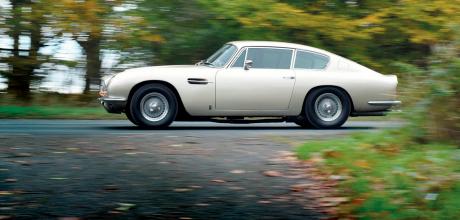1967 Aston Martin DB6 in the rare colour of Autumn Gold
We take a recently restored DB6, in the relatively rare colour of Autumn Gold, for an autumnal drive across the beautiful North York Moors.
GOLD RUSHDB6 ACROSS THE MOORS
WORDS & PHOTOGRAPHY PAUL WALTON
DB6 ACROSS THE NORTH YORK MOORS
We take a 1967 Aston Martin DB6 in the rare colour of Autumn Gold for anautumnal drive across the beautiful North York Moors
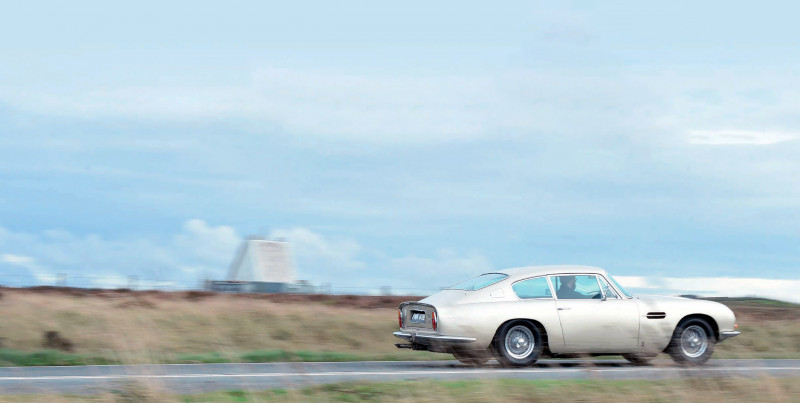
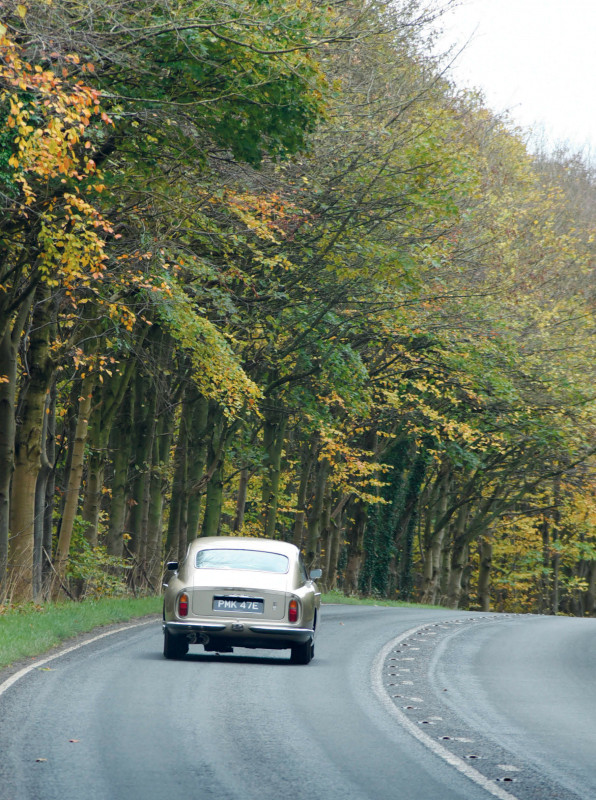
With the throttle as perfectly balanced as the steering, I exit the corner quickly and cleanly, ready for the long straight that follows. The road ahead of me is as empty as the view and, as I floor the throttle, the 3.9-litre engine delivers its power in one raspy, snarling lump, turning the car into a golden blur against the similarly coloured countryside.
It’s the long straights and fast, swooping corners such as these, together with its isolation, that makes the A169 one of the UK’s best driving roads.
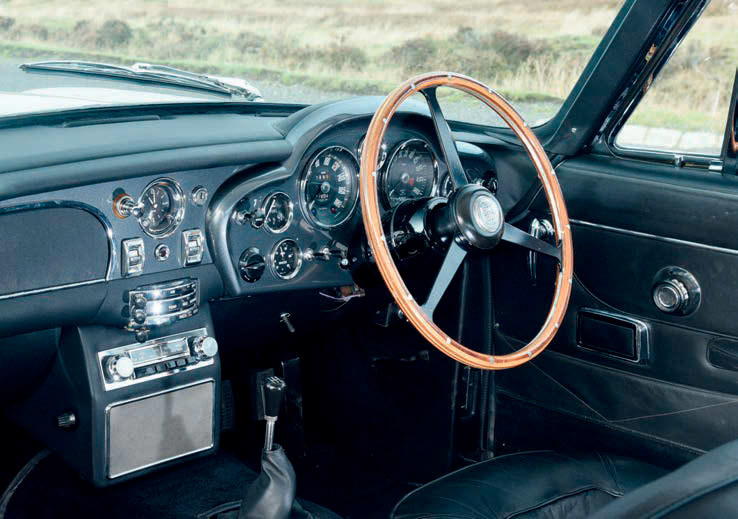
The 21-mile section that snakes over the top of the North York Moors between Pickering and Whitby is especially exciting. And how better to explore this fantastic stretch of tarmac than in one of Aston’s best but underrated sports cars; a DB6?
“Nice car, mate,” says a random passer-by as I park the car in the centre of Pickering, the pretty market town 25 miles north of York. I sheepishly admit to it not being mine, quickly adding (before he calls the police) that I’ve just borrowed it from specialist Classic & Sportscar Centre down the road in nearby Malton. He’s right, though; it is a nice car. Autumn Gold was never a common Aston colour in the Sixties and many – like this one had been were subsequently changed for the more popular Silver Birch. Yet the light hue suits the car. Not only does it make the Aston appear more regal than it already is, but when the stark autumnal sunlight hits the panels, it starts to have a golden glow like the kids in the famous Ready Brek advert of the Seventies and Eighties.
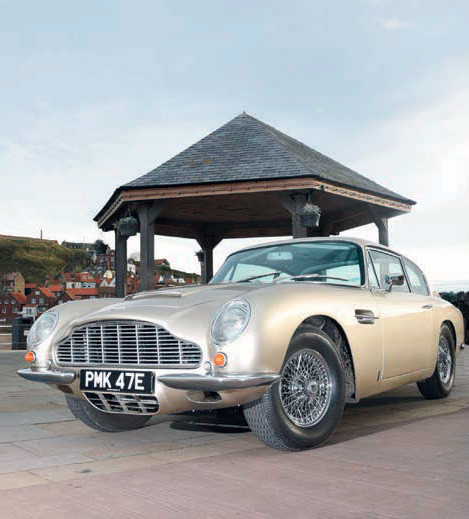
Being produced on 8 July 1967 means this particular example – chassis 3112/R – comes from the first two years of DB6 production. After being supplied new by Lazenby Garages of Leicestershire, it spent less than a decade on the road because by the time the DVLA went on to a computerised system in the late Seventies, PMK 47E was not road taxed. It wasn’t until 1988 when the car was re-registered and put back on the road by an Aston Martin enthusiast who kept it for around ten years.
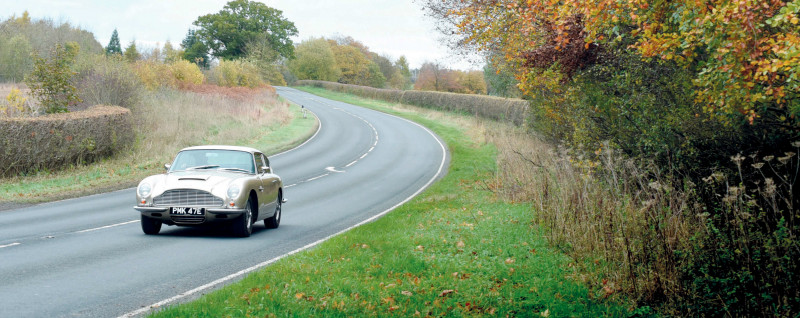
Trees line the road in places and with this being late 2022, their leaves are turning the same shade of gold as the car.
Between 2015 and 2017, the now grey coupe received a £200k restoration courtesy of leading marque specialist, Aston Workshop based in Durham, which included a bare metal respray back to its original Autumn Gold, a complete overhaul of the original 3.9-litre engine plus all the mechanical components were checked and refinished as required.
Although many of the original parts were retained – such as the hydraulic power-assisted steering and a period Radiomobile sound system – the automatic transmission, that the car was originally fitted with, was upgraded to a modern five-speed manual making it a car that deserves to be driven and enjoyed, not displayed. And that’s exactly what I intend to do.
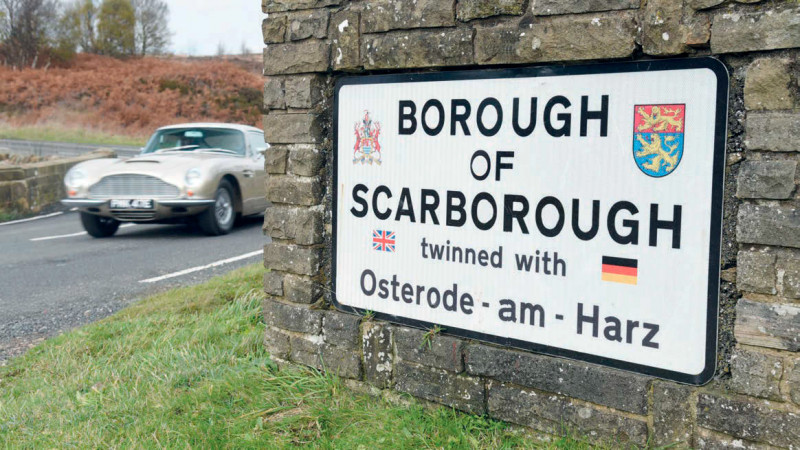
The plan is simple; I’m going to drive between Pickering and Whitby on the A169 that cuts across the North York Moors. Not only does the road offer spectacular views over the harsh countryside, but the many long straights and fast corners will be a proper test for this icon of the Sixties.
When I slip behind the large, woodrimmed steering wheel, I’m greeted by a similar design of dash that was in the 1958 DB Mk III featured in the previous issue. Together with heavy use of chrome that’s splashed across the fascia, it makes the DB6’s interior appear more old-fashioned than other sports cars from the era such as the Jaguar E-type Series 2 or Ferrari Dino. But like a handmade Savile Row suit or anything by Frank Sinatra, it still has a timeless style that will never go out of date.
The engine churns into life the moment I twist the key in the ignition, that’s located high on the fascia. I leave Pickering’s pretty market square – the familiar roar of the straight-six engine ricocheting off the buildings causing even more heads to turn – and join the A169 to start my journey towards the coast.
The 21-mile road goes back to the 18th century when three Acts of Parliament for the building of a turnpike (or toll road) between Whitby and Pickering were granted in 1784, 1785 and 1827. Incredibly, the road wasn’t tarred over until the Thirties, being laid with limestone until then. But in those early days, the traffic would have been nothing more than an occasional stagecoach, a farmer’s horse and cart, or perhaps a flock of sheep wanting a day out at the seaside. Today, 6,500 vehicles a year use the road, meaning it’s tabletop-smooth and perfect for a Sixties sports car. The first section cuts through the usually lush and fertile Yorkshire countryside, which on this cold autumn day looks empty and barren. Trees also line the road in places and with this being late 2022, their leaves are turning the same shade of gold as the car.
A couple of miles further north, where the A169 enters the North York Moors National Park, the road starts to climb, offering tremendous views across the moors. I look out to the Hole of Horcum, a spectacular amphitheatre, which is 120mdeep and 1km wide. Local legend has it that the hole was made by a mythological giant called Wade who picked up a clod of earth and threw it at his wife, making both the hole and nearby Blakey Topping where the clod landed. I wonder what Mrs Wade did in retaliation. Since Wade has a strong association with the sea (his boat is mentioned in Chaucer’s The Merchant’s Tale), I hope it was to hide his oar.
An even better view than of the moors, though, is the one through the screen and down the Aston’s long, golden bonnet. As evocative as the exhaust note, it’s easy to understand why Aston’s famed DB models of the Sixties continue to fascinate us. As one of the few cars (the E-type and original Mini being two more) that are a part of British society and culture, everyone who saw the car during my trip knew exactly the name of the manufacturer, if not necessarily the model (most thought it was a DB5, “You know, like Bond drives”). Not something that could be said about an obscure Italian or German model.
But as I roar across the Yorkshire countryside, I wonder why the DB6 isn’t as universally loved or recognised as the DB5. Admittedly the 007 connection is key here. On and off for almost 60 years, the Silver Birch DB5 has been connected with one of the most famous film series in the world, making it as recognisable as George Barris’ iconic Batmobile from the TV series or a certain time-travelling DeLorean. Plus, when the DB6 was designed in the mid-Sixties, an extra four inches was added to the existing DB5’s chassis and the rear redesigned accordingly, becoming squarer with a small spoiler. Although hardly a monstrosity, the new car’s proportions weren’t quite as perfect as those of its immediate predecessor.
Like all updates should be, the DB6 was a significant improvement over the 5, offering more interior room while power steering had become standard and air-conditioning optional. But more importantly, this car still has the aura and mystique all Aston Martins from the era have; I’ve driven hundreds of classic cars over the years, but few – if any – feel as special as this. Yet at Åí350,000, this immaculate Autumnal Gold DB6 is half the price of a DB5.
My reverie is broken by a series of corners, a long right-hander followed by a left. With the road also dipping quickly, they’re the Yorkshire equivalent of two of the most famous corners in the Monaco Grand Prix circuit, Grand Hotel Hairpin and Mirabeau Bas. There might be more trucks and a lot less glamour here, but this car still makes the bends just as exciting as if I was on the C.te d’Azur. With the car weighing a surprisingly light 1,474kg, the Aston slices through the corners with ease, the power steering offering the perfect amount of resistance to remain quick, precise and perfect for roads like this. The moors now dominate the view out of the screen – much like the horizon from a plane – and I accelerate hard for a following straight, filling all of North Yorkshire with that raspy exhaust note. It might not be a Vantage, but the 3.9-litre straight-six still produces a healthy 282bhp, meaning its performance is strong and punchy, the Tadek Marek-designed unit always eager to deliver its power.
The road starts to ascend once again, meandering back and forth up to the top of Snod Hill, where, in the distance, is an enormous flat-headed pyramid, its eeriness heightened by a whisper of early morning mist. It might look like an alien spacecraft (although I’m not sure why they would land here, miles from civilisation, the British government or even a decent coffee), but this is RAF Fylingdales, a radar base.
The station originally consisted of three 130ft spheres built in 1962/3 (universally nicknamed the ‘Golfballs’), they were replaced in the early Nineties by the current 120ft structure. RAF Fylingdales’ objective is to alert UK and USgovernments of an impending ballistic missile attack (the so-called four-minute warning during the Cold War), plus detect and track orbiting objects. I cross my fingers that it doesn’t track the speed of golden classic cars. Not that I need a radar to be seen; despite what MI6 might think, Aston Martins aren’t very discreet and amongst the ordinary modern cars, this golden DB6 stands out like a thoroughbred horse would in a field of donkeys.
After I negotiate another tight corner with ease, passing into the borough of Scarborough that’s named after the larger seaside town 20 miles further south, the road starts to climb again. Following a delightfully fast, long sweeping curve there’s another long straight that gives tremendous views over Goathland.
Between 1992 and 2010, this pretty little village was home to the popular British TV series Heartbeat that was set in the Sixties and was about a Yorkshire bobby. Fantasising that I’m in an episode about a bank robber being chased by a Ford Anglia 105E police car, I drop down a gear and gun the engine. The car picksup speed as cleanly and easily and if I really was being chased by the rozzers in a diminutive 1.0-litre saloon, I’d have left them behind long ago.
Just as the surprisingly blue North Sea becomes visible over the edge of the moors, the road starts to descend more quickly than it climbed. Blue Bank is a steep, one-in-five (20 per cent) gradient that’s famed for its accidents, the most famous being on 21 July 1929, when the brakes of a bus failed, and it careered off the road at the bottom of the bank. At the point of the crash, the bus wrecked several beehives, and the rescue eff ort was hampered by hundreds of angry insects.
Where the road starts to flatten is the village of Sleights, the name coming from the Old Norse for sletta, meaning flat land. The Norsemen might have conquered huge swathes of Europe, but they clearly weren’t very imaginative.
The junction with the A171, after I cross the River Esk, marks the end of the A169. It’s also where the first German bomber, a Heinkel He 111, was shot down on British soil during the second world war, on 3 February 1940. To mark the location, a decade later two stone columns from a nearby bridge that were washed away during the flooding of July 1930 were positioned either side of the A171/A169 roundabout.
I manage to join the A171 in one piece and begin the final drive into Whitby, the beautiful harbour town famous for being the place where British explorer James Cook started his career as an apprentice in 1747. The town’s other claim to fame is more macabre, being the location of Dracula’s arrival into England in Bram Stoker’s 1897 novel of the same name. Disguised as a large dog, he bounded up the 199 steps to the 11th century abbey that sits on a cliff overlooking Whitby. Still, I doubt he received as much attention as I do in the DB6.
After successfully navigating the busy roads – aided by the car’s light steering and notably sharp, but progressive, brakes – my journey ends overlooking Whitby’s pretty harbour and the ruins of the abbey. Despite being a chilly November day, the always popular seaside town is still busy with tourists and the gold car gets even more admiring glances than it did in Pickering.
“Nice car.”
“Apparently so.”
The drive from Pickering has been a little over 20 miles, a blink of an eye in a modern DB11, but the DB6 has transformed it into a much bigger and more memorable adventure than its modern descendent, thanks to the aural and visceral excitement it offers.
The DB6 might always be overshadowed by the DB5, but, thanks to its speed, handling and still good looks, I couldn’t think of a better car for this autumnal gold rush through the majestic North York Moors. AMD
● Thanks to: Classic & Sportscar Centre in Malton, North Yorkshire, for the use of the beautiful DB6 featured here. See this car and many others at classicandsportscar.ltd.uk or call 01944 758000

Journey’s end – overlooking Whitby harbour and abbey. The Autumn Gold DB6 in Pickering, the start of Paul’s journey.


